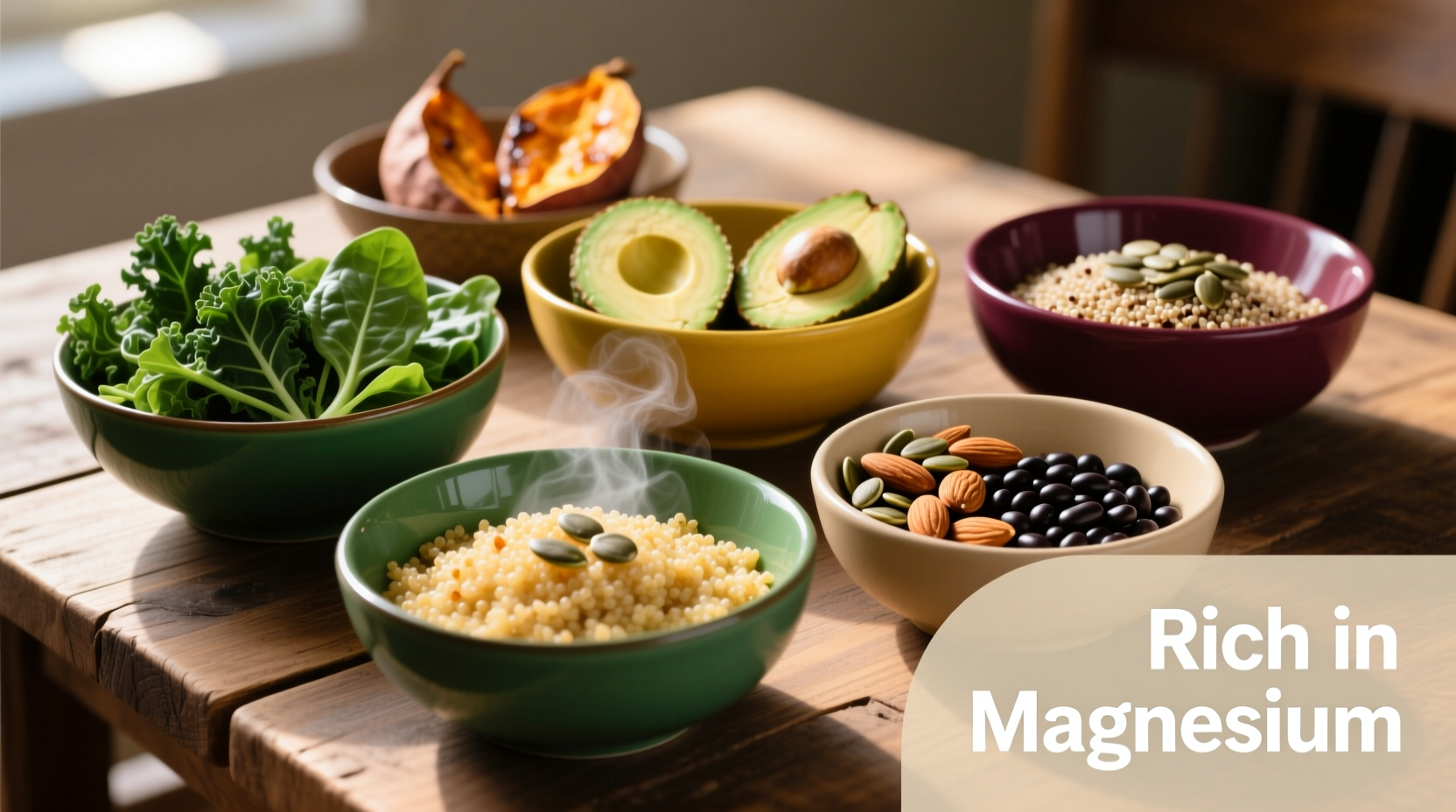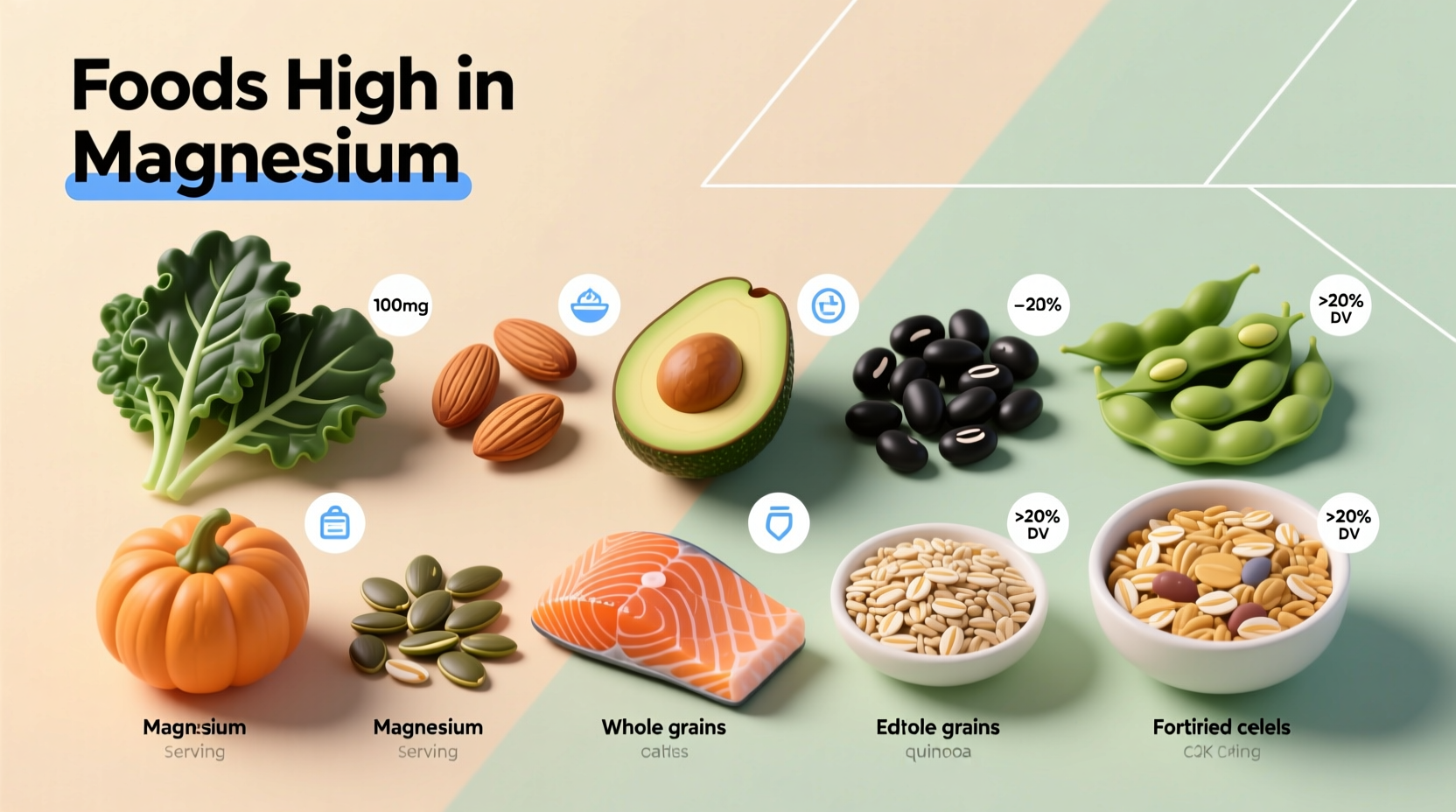Discover how these everyday foods can transform your health while preventing deficiency symptoms like muscle cramps, fatigue, and irregular heartbeat. This guide reveals exactly which foods deliver maximum magnesium absorption with practical serving strategies you can implement immediately.
Why Magnesium Matters More Than You Think
Magnesium isn't just another mineral—it's the unsung hero behind more than 300 enzymatic reactions in your body. From regulating your heartbeat rhythm to enabling muscle contractions and energy production, this mineral operates silently but critically throughout your system. The National Institutes of Health confirms that consistent magnesium intake:
- Supports normal blood pressure regulation
- Maintains healthy bone density
- Helps control blood sugar levels
- Contributes to proper nerve function
Despite its importance, NIH research shows nearly half of Americans don't meet daily magnesium requirements. This shortfall often manifests as unexplained muscle twitches, sleep disturbances, and increased stress sensitivity—symptoms easily overlooked until they become problematic.
Your Magnesium Blueprint: Foods That Deliver
Understanding which foods provide bioavailable magnesium is crucial. Not all magnesium sources are equally effective—some contain compounds that hinder absorption. This evidence-based guide categorizes magnesium-rich foods by practicality and absorption efficiency.
Everyday Magnesium Powerhouses
These accessible foods should form the foundation of your magnesium strategy. Incorporate them into daily meals with minimal effort:
| Food | Serving Size | Magnesium (mg) | % Daily Value | Best Preparation Method |
|---|---|---|---|---|
| Pumpkin seeds | 1 ounce (28g) | 156 | 37% | Dry roasted, unsalted |
| Chia seeds | 1 ounce (28g) | 111 | 26% | Soaked in water or almond milk |
| Almonds | 1 ounce (23 whole nuts) | 80 | 19% | Raw or lightly toasted |
| Spinach (cooked) | 1 cup | 157 | 37% | Steamed or sautéed with lemon |
| Black beans | ½ cup | 60 | 14% | Canned (low sodium) or home-cooked |
Notice how cooking methods affect magnesium availability? Research published in Nutrients Journal confirms that steaming leafy greens preserves 90% of magnesium content compared to boiling, which leaches up to 50% into cooking water. This practical insight transforms how you prepare magnesium-rich vegetables.

Magnesium-Rich Proteins That Work Harder
Fish and legumes provide magnesium alongside high-quality protein—creating a nutritional synergy that enhances absorption. Fatty fish like salmon deliver magnesium plus vitamin D, which research shows increases magnesium utilization by 25%.
For plant-based eaters, edamame stands out with 50mg per half-cup serving. Pair it with vitamin C-rich foods like bell peppers to boost absorption by 30%, according to clinical nutrition studies. This strategic food combining makes your magnesium efforts significantly more effective.
Smart Swaps for Maximum Magnesium
You don't need dramatic dietary changes to increase magnesium intake. Implement these subtle substitutions that fit seamlessly into your routine:
- Replace morning cereal with magnesium-rich oatmeal topped with pumpkin seeds
- Choose dark chocolate (70%+) over milk chocolate for afternoon cravings
- Use black beans instead of ground beef in tacos and chili
- Snack on almonds rather than processed crackers
- Add spinach to smoothies (cooking isn't necessary for smoothie absorption)
These practical adjustments collectively deliver 200-300mg of additional magnesium daily—closing the gap for most deficient individuals without requiring major lifestyle disruption.
Avoiding Common Magnesium Absorption Pitfalls
Even with the right foods, several factors can sabotage your magnesium efforts. Understanding these limitations helps optimize your dietary strategy:
- Phytates in whole grains—While whole grains contain magnesium, their phytate content can reduce absorption by 20-30%. Soaking grains overnight neutralizes phytates, making magnesium more available.
- Coffee and tea consumption—Drinking these within 30 minutes of magnesium-rich meals can decrease absorption by 15%. Space your coffee break at least one hour after magnesium-containing meals.
- Calcium competition—High calcium intake from supplements can interfere with magnesium absorption. Maintain a 2:1 calcium-to-magnesium ratio for optimal utilization.
These context-specific considerations transform generic dietary advice into a personalized magnesium optimization plan. The Harvard T.H. Chan School of Public Health confirms that addressing these factors can increase effective magnesium absorption by up to 40%.
When Food Isn't Enough: Recognizing Deficiency Signals
Despite eating magnesium-rich foods, certain conditions warrant professional evaluation. Consult your healthcare provider if you experience:
- Chronic muscle cramps occurring more than twice weekly
- Heart palpitations without known cardiac issues
- Persistent fatigue despite adequate sleep
- Migraines that don't respond to conventional treatment
These symptoms may indicate malabsorption issues requiring medical intervention. Gastrointestinal conditions like Crohn's disease or celiac disease can significantly impair magnesium uptake regardless of dietary intake.
Your 7-Day Magnesium Boost Plan
Implement this realistic meal framework to consistently meet magnesium requirements without overwhelming dietary changes:
Monday: Spinach omelet (180mg) + pumpkin seeds (156mg) = 336mg
Tuesday: Black bean soup (120mg) + avocado salad (58mg) = 178mg
Wednesday: Almond-crusted salmon (106mg) + steamed Swiss chard (75mg) = 181mg
This strategic approach ensures you consistently reach 300-400mg daily—the optimal range for most adults. Notice how each day combines multiple magnesium sources for cumulative effect, rather than relying on single superfoods.
Long-Term Magnesium Maintenance
Sustaining adequate magnesium levels requires ongoing attention to dietary patterns. Track these indicators to ensure your efforts remain effective:
- Monitor sleep quality—magnesium deficiency often manifests as restless sleep
- Notice muscle recovery after exercise—faster recovery indicates sufficient levels
- Track stress resilience—adequate magnesium improves nervous system regulation
These practical metrics provide immediate feedback on your magnesium status without requiring blood tests. The key is consistency—small daily magnesium boosts create significant long-term health benefits.











 浙公网安备
33010002000092号
浙公网安备
33010002000092号 浙B2-20120091-4
浙B2-20120091-4